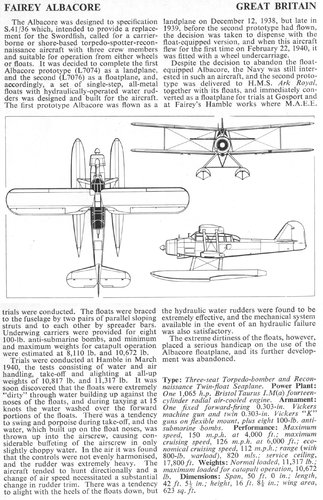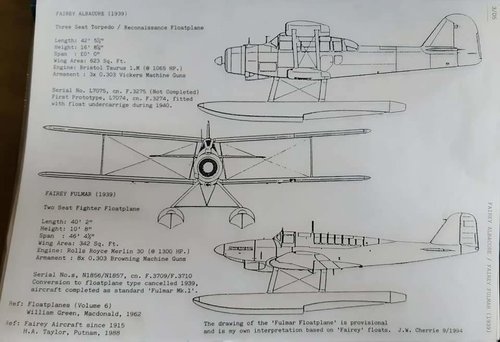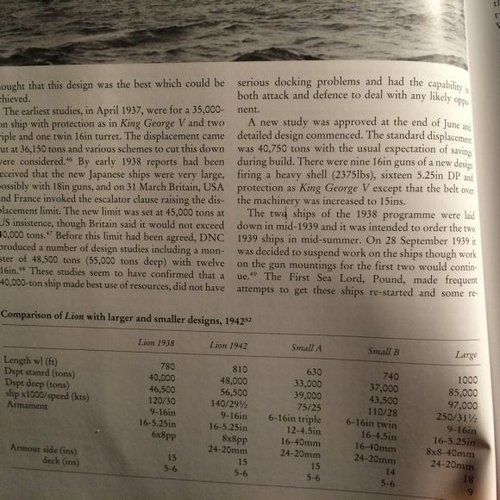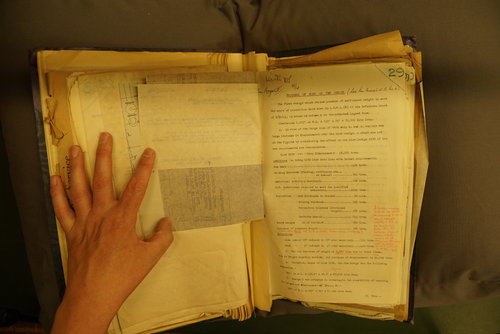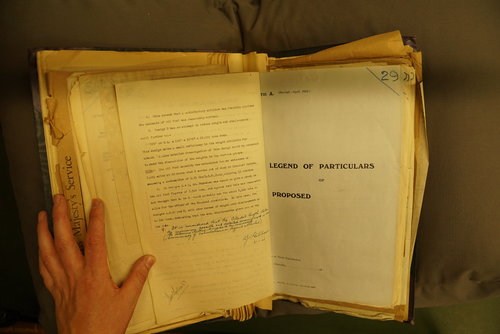On 6 July 1936 ACNS held a conference to examine the consequences of a change to a 15in or 16in main battery. DNC produced some quick design estimates. Ship I was armed with three triple 15in guns and adequately protected over magazines (16½in side, 6½in deck). Despite grossly inadequate protection to machinery (11½in side, 1¼in deck) such a ship if designed for 29 knots would displace 41,000 tons. Even a 23-knot ship thus protected and armed would, it seemed, displace 38,000 tons. Ship II was a slow (23-knot) 35,000-ton ship armed with three triple 15in guns. On this basis she could have the protection of the 1937 battleship (15in/14in side, 6in/5in deck). Ship III was a 35,000-ton ship with three triple or twin 16in turrets. If protected against 16in shell like Ship I, the version with triple turrets could not be built, because no weight would be available for machinery. With twin turrets, she could be protected, but speed would be only 22 knots.
Controller pointed out that if the Japanese did adopt a heavier gun, it was nearly certain that they would also break the 35,000-ton limit. If the British went to 15in guns, turret design would take about fifteen months. The only way to save time would be to adopt the existing 16in turret design of the Nelsons, but that would require a jump of about 10,000 tons. A 24 September 1936 meeting in First Lord’s room decided that, since the decision on a gun for the 1937–8 battleships was urgent, the Foreign Office should be urged to ask the Japanese for a definite answer. The ambassador reported helpfully that people qualified to judge, such as the Soviet ambassador and the American advisor to the Japanese Embassy in Washington, had told him that the Japanese government understood that it would be folly to compete in naval construction with the United States and Britain. He admitted this was not conclusive. To further confuse matters, the Japanese began talking about a new conference with the British and the Americans to reach some understanding. The British consoled themselves that any 35,000-ton Japanese ship armed with 16in guns would be unbalanced, hence could be defeated by the new British battleships and that if they embarked on a totally new type the British could quickly outbuild them. Controller was unwilling, however, to mark time and to bet on these possibilities.
By this time the British had some idea of what a well-balanced 16in gun ship with reasonable protection against 16in fire would look like. In connection with projections of Japanese construction, in September 1936 Controller listed two possibilities, both armed with nine I6in: A slow (24-knot) 40,000-ton ship (750ft x 110ft x 30ft). A fast (28-knot) 44,000-ton ship (820ft x 110ft x 30ft). Controller wrote that given British superiority in shipbuilding, even if the Japanese enjoyed a six-month lead with some new design, the British could catch and overtake them in a ratio of 3 to 2. If the British persisted in laying down three more ships in July 1937 (as they did), they would end up with a division of six fine fast capital ships (with Hood) ‘which in the tactics of battle might play a very important part, especially if the enemy’s battleships are slower’.
The Japanese stalled, telling the British Ambassador that they could not talk until the current tension with China (which soon resulted in all-out war) was resolved. By October Controller had ‘no wish to appear suspicious’, but he thought it obvious that the Japanese were simply giving themselves more time for their new design. On 20 October the British formally asked the Japanese Ambassador to Washington for an assurance that his country would not adopt the 16in gun for new ships. The Ambassador said he believed his government favoured the 14in gun, but would be reluctant to commit itself to any arms limit at that point. In December the Japanese Ambassador to London said that his country’s plans were not yet firm; there was a certain amount of confusion. Director of Plans went further: in January 1937 he suggested telling the Japanese that ‘an effort by the Japanese Ministry of Marine to bring down the whole of the treaty system in order to serve their own selfish ends would cause a very bad impression over here’. Finally on 19 March 1937 the Minister for Foreign Affairs told the British Ambassador to Japan that he would shortly receive a note rejecting the 14in gun limit. It arrived the day before the deadline, 31 March 1937.
Early in June the US government asked all the Washington Treaty powers about their intentions regarding gun calibre; it really meant Japan. The Japanese replied that they would no longer be bound by either the 14in gun limit or the 35,000-ton limit. That made US adoption of the 16in gun certain. This decision was communicated to the British on 13 July. The delay in this announcement was due to considerable public pressure to limit armaments, particularly in the United States. The limit embodied in the London Naval Treaty, which had shaped the King George V class, was dead.
The British had already adopted a programme to replace existing battleships: two ships in the 1936–7 programme, three in 1937–8, two in 1938–9, two in 1939–40 and one in 1940–1.4 It was too late to change the three 1937–8 ships, so they were repeat King George Vs. It seemed reasonable to assume that the Japanese would exceed 35,000 tons, although they offered unofficial (false) assurances that they would not build ‘monster’ ships. On that basis in the summer of 1937 DNC investigated the characteristics of larger ships armed with heavier guns, looking towards the 1938 programme. This was no academic exercise. Bids for 1938 programme ships had to be requested in the spring of 1938, which meant that a firm sketch design was needed late in 1937 – before, as it turned out, the escalator clause had been invoked, hence before the British could know what the new treaty limit would be. Because it was very much in their interest to hold down the size (hence the cost) of any new ship, the British wanted to minimise any jump in allowable displacement – but they did not want the jump to be so small that they were precluded from building a ‘balanced’ 16in-gun ship.
On 21 July Goodall reported several sets of characteristics, for ships armed either with three quadruple 14in guns, three triple 15in or three triple 16in.5 A King George V class hull could accommodate two triple 16in turrets on 35,000 tons. Adding a third would cost 2000 tons (design displacement would increase to 37,500 tons). Reducing displacement by that 2000 tons would cost a knot and a half (27 knots) and the midships catapult would have to be replaced by a turret catapult. Replacing each of the turrets of a King George V with a triple 15in turret would cost 1250 tons (36,750 tons), but in that case the ship would be limited to 27 knots and would have the turret catapult.6 Replacing each turret of a King George V with a triple 16in turret would cost 3000 tons (38,500 tons). To cut back to 35,000 tons the ship would have to have her speed reduced to 25 knots and she would also have to have a turret catapult. In this particular case topside arrangement would be critical, so Goodall did not want to be bound to these conclusions until he had prepared a drawing. All of these designs benefitted from limited space and weight savings due to adopting the higher boiler forcing rate employed in the new 8000-ton cruiser (Fiji class). The situation would have been somewhat improved if, as Controller asked, gun elevation was reduced from 40° to 30°, but the main conclusions were unchanged.
None of this was particularly attractive, so Controller asked whether there would be any point in adopting a Nelson arrangement for the 25-knot ship with triple 16in turrets. Turret design had moved on to require a symmetrical disposition of shells around the trunk, which had not been the case in Nelson. That spread out the turrets and lengthened the citadel beyond what was required in the more conventional King George V arrangement. Its extra weight absorbed any saving from grouping the turrets together. Moreover, ammunition supply to the 5.25in guns would have been poor and it would have been difficult to fit in the required four shaft machinery with separated engine and boiler rooms.
Controller tried another approach. On 35,000 tons, with nine 16in and the 28.5 knots (deep) of a King George V, could magazines and barbettes be fully protected against 16in fire between 14,000 and 28,000 yds. How much would be left to protect the machinery? Alternatively, if belt and deck armour over the machinery were an inch less than over magazines and barbettes, what displacement would be needed? How much would be saved if speed were reduced to 26 or 27 knots? It turned out that such a ship would displace 41,000 tons. The 26-knot version would displace 38,500 tons, the 27-knot version 39,500 tons.
Further studies dated mid-August 1937 gave data for a ship with nine 16in guns and a turret (rather than amidships) catapult. Assuming displacement as King George V (35,500 tons) and the same protection for magazines and barbettes, to provide sufficient machinery to make the same speed (100,000 SHP, 28.5 knots in standard condition), machinery protection would be limited to 7in belt and 2¼in deck. Cutting speed to 27 knots would increase the deck to 3in, while cutting to 26 knots would allow for an 11in belt and a 3¾in deck.
By this time the United States had announced that it was building a pair of 27-knot 35,000-ton ships armed with nine 16in guns, the North Carolinas. How was that being done? At the beginning of September, DTD asked DNC further questions. Could the 41,000-tonner – the fully protected 16in ship – go through the Panama Canal? She would be designed to do that, probably with a 106ft beam. What if the armoured deck were brought down to middle deck level, as in earlier battleships? If magazines were fully protected and the machinery was covered by a 5in (rather than 6in, as over magazines) deck, how much could be provided over the machinery? If magazines were protected against 15in fire, how much would be left for machinery? It turned out that bringing the armoured deck down a deck level did save considerable weight, so that machinery could be protected by an 11in belt in the first case. In the second (protected against 15in fire), machinery spaces would have 13½in side protection.
In mid-September Controller tried another approach: two triple turrets and high speed, about 30 knots. A rough estimate showed the same displacement as King George V (35,500 tons) with the same aircraft arrangements and a 16½in belt and 6in deck, both throughout. If the same guns were mounted in twin turrets, the displacement would be the same, but the belt would be reduced to 15in over magazines and 14in over machinery, with corresponding deck thicknesses of 6in and 5in. However, in the first case protection would cover less of the ship’s length, 48 per cent rather than 55 per cent as in King George V. In the second case that would increase to 54 per cent. These designs were ruled out on the grounds that the minimum number of guns adequate for fire control was eight (four-gun salvoes if possible).
For 1938 the 14in gun was ruled out as too obviously inferior to 16in.7 The Naval Staff considered nine 15in uneconomical in terms of broadside weight, but on the other hand a ship so armed could be shorter than one with either nine 16in or twelve 14in. DNC’s battleship designer Pengelly found that a ship armed with 15in guns might come close to the treaty limit. Armament, barbette armour, etc, would add 450 tons to a King George V, equivalent to 1in on the belt and ½in on the deck over the machinery. Alternatively, the addition might be accepted with the knowledge that the ship would complete heavy ‘but it is considered that the ship should be redesigned with this in view’. Pengelly also pointed out that if it were accepted at the outset that the ship would end up drawing, say, 1ft 3in more than the reported standard, then it would be possible to combine nine 16in with King George V machinery and protection, at the cost of perhaps half a knot; the final standard displacement would be 1500 tons greater (37,000 tons). ‘This … would not be the first occasion that the draught of a Capital Ship on completion exceeded the estimate by more than 1 foot.’

